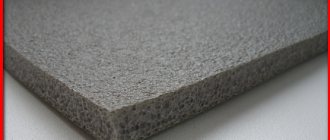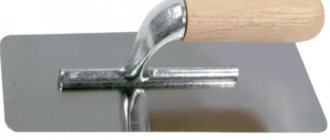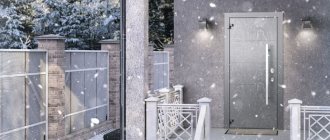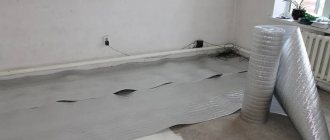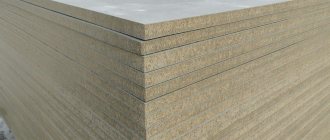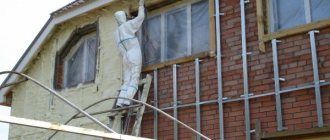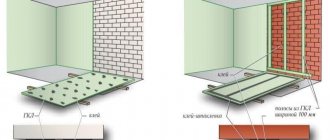In order not to freeze at home in winter, and to save costs on additional heating devices, you need to take care of insulating the room. Spray insulation is now gaining popularity.
It appeared back in 1937. It's not a new thing abroad for a long time. The active substance is called polyurethane foam. It is sold in large canisters and cylinders. It is obtained by mixing a polyol and a polyisocyanate. They react to form a significant amount of foam.
Apply to the surface by spraying. Has a bubbly texture. After drying it hardens. 80% consists of air. The insulation thickness of 5 cm is comparable in its characteristics to a 35 cm expanded clay layer.
Pros and cons of sprayed insulation
Any insulation material has its advantages and disadvantages. It is important to familiarize yourself with them before starting work. This will allow you to make the right choice and avoid unpleasant situations.
Positive characteristics:
- harmless to humans - the composition does not contain hazardous substances;
- penetration into hard-to-reach places - every small crack will be filled;
- low thermal conductivity - the room temperature will not decrease;
- absence of joints - forms a single canvas;
- excellent sound insulation - no more noise;
- resistance to temperature fluctuations - will not collapse under the influence of atmospheric phenomena;
- durability of the material – will last 30–50 years;
- reliable adhesion to surfaces - firmly attached to any objects;
- water-repellent properties - it is not afraid of moisture;
- versatility of use - used almost everywhere;
- ease of application - even a beginner can handle it;
- resistance to fungi, mold, pests, chemicals;
- light weight – almost weightless;
- resistant to ignition - stops burning without a fire source.
Figure 1. The insulation does not leave “cold bridges”.
Many problems are solved that other types of insulation cannot cope with.
But there are disadvantages:
- possibility of deformation of the spraying surface - preliminary leveling will be required;
- poor tolerance to exposure to sunlight - it is worth protecting it from them, otherwise a gradual loss of beneficial qualities occurs;
- the need to use additional equipment - a bulky unit will be required;
- work in a protective suit - vapors generated during work should not enter the lungs;
- vapor permeability of the finished coating - there will be a need to ventilate the room;
- high price - high cost compared to other types of insulation.
The presented type of thermal protection contains a small number of unpleasant moments. But you shouldn't ignore them. When choosing an insulation method, you need to carefully study them and draw the appropriate conclusions.
Tips for use
Before using polyurethane foam, it is worth remembering some basic rules:
- The temperature of the surface on which the foam will be applied must be within the limits indicated on the packaging.
- A container of polyurethane foam should not be stored at temperatures below zero. If the sealant was located somewhere at sub-zero temperatures, it must be warmed to room temperature before use. Heating with warm water at 30-500 ° C is possible, although the products of some manufacturers do not require such procedures. In any case, it is better to carefully study the instructions for use.
- Apply foam while holding the container upside down. Voids and seams must be filled with sealant to approximately 1/3 of the volume. It should be remembered that during polymerization the layer tends to expand. The lower the temperature, the higher the viscosity of the material. The contents stick to the walls of the container, making it impossible to use the entire mixture. When used horizontally, the valve may become clogged.
- The foam can must be shaken well before use. This is necessary in order to mix the components.
- Surfaces to be treated should be thoroughly cleaned of dust and debris. You can lightly moisten them with a spray bottle, but do not allow liquid to accumulate. Otherwise, ice may form in such places, preventing the adhesion of materials.
- If the thickness of the gap is more than 5 cm, it must be closed on the opposite side with cardboard, foam plastic or other material.
- Further surface treatment should be done no earlier than after 24 hours. If necessary, you can apply another layer of foam.
- The hardened foam must be protected from direct sunlight, otherwise the layer will become porous and brittle, which will reduce the performance characteristics of the material.
- If the composition has not been completely used up, it can be used after some time.
Carefully studying the manufacturer's advice on the use and storage of winter polyurethane foam will help you achieve good results in working with this material at any time of the year.
The video describes the use of different types of polyurethane foam in more detail.
Types of insulation for spraying
This is a universal material. It has two completely different types:
- Lightweight (open - cellular structure). Reminds me of cotton wool. It produces foam rubber. Has excellent elasticity. Soft. During operation, there is less material consumption than with rigid material. Provides better sound insulation compared to its rigid form, but the ability to absorb liquid is higher. Therefore it is suitable for internal insulation. Used in the creation of decorative elements. Its use requires adequate ventilation. Density 8–20 kg/m3.
- Hard (closed - cellular structure). Sufficiently dense material - from 25–300 kg/m3. Similar to foam. The price is higher than the light type. Suitable for outdoor use. Excellent insulation of the foundation. Ideally protects the walls of the bathhouse - vapor barrier is almost zero. Has a positive rating when working with a roof.
The use of any type depends on the tasks being solved and the conditions of use. All of them will retain their qualities for 25 years.
There is a classification by components:
- one-component - to acquire hardness you will need humidity from the air and building materials. Can be used outdoors and with sufficient ventilation;
- two-component - hardens due to a reaction between substances. Can be used in rooms without access to fresh air.
There are several types of sprayed PU - difficult to burn and poorly flammable. The fire safety class is indicated on the packaging.
Tools
- Thermal imager;
- Sprayed polyurethane foam. Among the most popular manufacturers are POLYNOR, ELASTOSPRAY;
- Gun for cylinder;
- Water in the sprayer;
- Protective equipment: respirator, gloves, goggles;
- Foam cleaner in a bottle;
- Fire retardant composition.
In order to properly insulate a roof with polyurethane foam, you must first determine the coldest areas of the roof. To do this, you can use a thermal imager. Photography with this device allows you to see the coldest and most ventilated places in the roofing and assess the level of heat loss. This is necessary in order to identify those areas that need a thicker layer of spraying, as well as to eliminate existing gaps or cracks.
In this video we will look at one-component polyurethane foam insulation. It is effectively used in insulating attics, walls and basements, where there is a wall or substrate that needs to be protected from cold or, conversely, from heat. Sprayed insulation is also applied to seam joints, window frames, doorways, pipelines, etc.
Sprayed insulation has a number of positive characteristics:
- Low thermal conductivity coefficient, tending to 0.023;
- No seams when applying the material. When work is performed by specialists, the presence of gaps or cracks is excluded;
- High degree of adhesion – one of the best. It is ensured by an adhesive ratio in the mixture that is as close as possible to polyurethane foam adhesives;
- Optimal sound insulation, which is suitable for roofing with metal tiles;
- High degree of waterproofing, which ensures the preservation of a comfortable microclimate in the room;
- Environmental friendliness;
- The dew point will be in the insulation, not in the wood, which means it will not rot.
The pricing policy of the purchased material initially confuses the buyer, since the number of cylinders that need to be purchased can lead to significant expenses. But if you calculate the cost of insulating an attic space with another insulation, you will have to include the following in the general list of costs: the insulation itself, the cost of its delivery, films, materials for fixing, scraps in the form of waste, the amount of time spent on installation, as well as the work itself. That is why the cost of polyurethane foam in cylinders ends up being quite affordable, and the costs for it are justified.
Polyurethane foam in cylinders is also used for application to surfaces such as concrete, brick, and wood.
The foam must be applied to a clean, prepared base. The metal should be degreased, it should be free of rust.
Popular manufacturers of sprayed polyurethane foam
There are not many manufacturers of sprayed PU - this type of insulation is only gaining momentum. There are 5 most famous ones:
- Polynor – country of origin – Russia. Designed for thermal insulation of rooms, surfaces of various shapes, eliminating the penetration of street noise. Polinor insulation is used to protect windows and balconies from drafts. Used to fill gaps when installing doors. Sold ready-made. All you need is a nozzle. Density 19 – 25 kg/m³. The cost of covering for 2 m2 is 450 rubles. Advantages: convenience, versatility. Disadvantage: high cost;
- Ecotermix are two-component spray systems. Produced in Russia. Available in 220 kg barrels. The price starts from 167 rubles per kg. Available types of insulation with an open-cellular structure. They are intended for interior use only. Density 7–14 kg/m3. There are polyurethane foam sprayers with a closed cell structure. Their density is higher - from 20–25 kg/m3; there are representatives with a density of 40–45 kg/m3. There are types of insulation based on water and freon. The latter are all-season. Suitable for tanks and pipes, providing complete heat and sound insulation. Can be used for outdoor work. 1.5 kg of insulation with a density of 20 m3 per 1 m2 of area is consumed. The advantage is the absence of excess waste. The disadvantage is the large dimensions, the need to mix components, and the need to independently purchase additional equipment;
- Tytan Professional Thermospray – Russian production. Its density is 20–25 kg/m3. Contains 1 component. Used for insulation of garages, basements, private houses. Fills voids and reliably glues surfaces. A can worth 612 rubles is enough for 2 m2. Pistol included. The advantage is ease of application. Disadvantage: it does not stick to polyethylene.
- Teplis – country of origin – Russia. The contents of 1 container cover up to 3m2. Material density 20–25 kg/m3. The price starts from 365 rubles per jar. Designed for sealing rooms, eliminating noise, and patching cracks. The advantage is the absence of a protective suit, the kit includes a rotating spray tube, a more affordable price category. The downside is the fragility of the included device;
- Foam Kit is a company that sells components made in Russia, the USA and other countries. Here you can purchase a ready-made kit to get started. It includes containers with components, gloves, a gun, nozzles, an installation key, and hoses. Everything is packed in a cardboard box with a carrying handle. The density of the resulting material is 28–30 kg/m3. Covered area up to 23 m2. The price of one set is 29,900 rubles. Designed for external and internal work. Able to close holes, insulate walls, and eliminate noise interference. The advantage is the elimination of the search for additional equipment and the low price compared to other brands.
Features of the material
Sprayed polyurethane thermal insulation refers to a substance formed by mixing two components (polyol and isocyanate). To lay the finished material, pouring or spraying can be used. The first method is well suited for insulating large areas and filling voids inside engineering structures. The spraying method allows you to create a higher quality surface. In this case, the components are mixed under pressure inside special generators, and then supplied to the outside using a spray gun.
For use in everyday life and in local areas (inside cracks, gaps, openings), one-component polyurethane foam compositions were developed, placed under pressure in liter cylinders. There is no need to pre-prepare the substance here: foaming and subsequent polymerization occurs during spraying. Polyurethane reacts with oxygen, resulting in a monolithic coating of microscopic cells. The liquid consistency helps the material reach hard-to-reach areas, ensuring their sealing and insulation.
Application area
Sprayed polyurethane foam has found its place in almost every area:
- large-scale and individual construction - creation of a heat-insulating and waterproof layer (roofing work, blocking the access of cold air through walls, windows, doors, balconies, basements, bathhouses, foundation);
- prefabricated structures - creation of sandwich panels;
- furniture production - the use of an elastic urethane foam layer (foam rubber) in the creation of mattresses, upholstery, seats;
- freezing units – protection against cold leakage for household and industrial appliances;
- pipeline transport – insulation of pipes for various purposes (petroleum products);
- heating networks – preventing hot water supply from cooling down;
- automotive industry - application in the arrangement of car interiors, creation of bumpers;
- equipment – vibration protection of electrical devices, waterproofing of contact connections;
- aircraft construction – protection against heat loss, noise insulation;
- carriage building – fire-resistant materials, noise reduction, thermal insulation properties;
- transport refrigeration equipment – microclimate support;
- design – creation of decorative products, jewelry, stucco moldings.
This material has conquered the whole world. Its ability to stick to almost any surface, even pipes, has come in handy for many. People sleep on it, sit on it, without knowing it.
Preparing for work
The insulation process is completely within the capabilities of any owner. Spray insulation will require two components:
- a prepared mixture of foaming agents, polyester components, foam regulators and fire extinguishing additives;
- a substance based on isocyanate.
Shake the first ingredient thoroughly. Usually a mixing mechanism is used for this; doing it yourself may not provide the required accuracy. The isocyanate is carefully checked for the presence of foreign impurities. If they are detected, the second ingredient is heated to 700°C and mixed. Before use, strain the mixture through a metal sieve. The components are used in a 1:1 ratio.
It is important to remember that the ingredients should not come into contact with water, steam or moist air; It is unacceptable for foreign objects to get into them. Containers containing insulation components must be tightly closed.
All ingredients are best used within a short period of time, immediately after preparation.
Spray equipment
The entire process of applying insulation foam is carried out using low-pressure machines. In addition to machines, you will need:
- protective glasses;
- overalls and shoes, rubber or cotton gloves;
- additional equipment: gas mask, thermometer and respirator.
Stages and technology of the spraying process
All actions to prepare equipment and surfaces are carried out directly at the site of further work.
Important! The insulation does not like wind - work should be carried out in its absence. The day should be without precipitation.
Recommended conditions for application: + 20 C0. Work can be carried out at lower temperatures. But this does not apply to all brands of atomizer. For such purposes, it is worth choosing all-season insulation.
Important! Ordinary stamps simply will not be able to stick to the surface in the cold. As practice shows, in winter there will be more of it. There will be a risk of performing the work poorly.
If you have a lot of work to do, you can’t do it without an assistant. All preparatory activities and the insulation process must be completed in one day. Otherwise, everything will have to be repeated.
Equipment
For the process of spraying insulation, you will need to protect yourself from harmful fumes.
Might be interesting
Vapor barrier
Effective and simple solutions for insulating ceilings in…
Vapor barrier
Technologies and materials for effective thermal insulation of floors in…
Vapor barrier
Vapor barrier and waterproofing, is there a difference?
Vapor barrier
Features of vapor barrier of a wooden building
Important! The process of interaction with sprayed thermal insulation takes place in a protective suit. Glasses and a mask are required. Hands should be protected with silicone gloves. Feet must be covered with rubber boots. Avoid inhalation of substances and contact with skin.
You will need a special installation for mixing substances, a hose and a gun. They can be purchased for rent if this is a one-time process. At the time of mixing materials, the surface must be prepared.
You need to stock up on a product that removes sprayed thermal insulation in advance. It will come in handy when you get into unnecessary places.
Surface preparation
Before carrying out insulation technical measures, you need to perform the following actions:
- the surface must first be cleaned of dirt and dust;
- holes and cracks should be covered with cement - adhesion to the surface will improve, the integrity of the structure will not be at risk;
- the area that does not need to be insulated is covered with polyethylene material;
- Moisten the application surface with water for better adhesion.
After all these steps, you can begin direct spraying.
Application of insulation
The process of applying polyurethane heat protection occurs in several stages:
- the first substance is mixed in the container using a mixer;
- another component is mixed in the second tank - you need to warm up the contents;
- they are combined in the third container;
- the resulting composition is poured into a special unit and sprayed onto the required area using a hose and a gun;
- you should call an assistant to periodically mix the substances;
- first you should go through all the hard-to-reach areas, joints, cracks;
- work is done from the bottom up;
- the output is foam that increases several times;
- each layer is applied after the previous one has dried;
- They dry for about an hour;
- minimum number of coatings – 3;
- protection from UV rays is carried out immediately - plastering, painting, siding.
Spraying polyurethane foam can be done with your own hands if the application area is small. But many difficulties will arise with a large surface. The risk of doing something wrong will increase many times over. Such cases should be entrusted to professionals.
Important! If you have to hire a crew, you should be vigilant. The professional himself will offer to check his work. You will need a nail or a probe (the operator has one). A piece of insulation is cut out anywhere on the finished surface. It must contain at least 3 layers. If they are not there, the spraying technology is broken.
How to properly insulate with polyurethane foam?
The technology of insulation using polyurethane foam has some features, and the technology for performing the work must be strictly followed - otherwise it will be impossible to achieve the desired result.
It should be borne in mind that it is naturally more convenient and best to carry out work at the stage of construction and/or renovation of a house. But it is quite acceptable to carry them out in a building in use, especially when it comes to exterior work.
But it should be taken into account that when insulating walls indoors, you will still have to do cosmetic repairs afterwards, since a decorative cladding will be required for the applied layer of thermal insulation.
But another factor must be taken into account: internal insulation always loses to external insulation, and primarily due to a possible shift in the dew point, which may appear either inside the wall, contributing to its gradual destruction, or on the inner surface - in this case, problems associated with the fight against mold and mildew , can't be avoided.
Before insulation is carried out, its future thickness should be correctly calculated, which is directly determined by the climate characteristics of a particular region, as well as the thermal conductivity of the material from which the walls of the building are constructed.
And before you begin directly applying polyurethane foam, you should carry out the necessary preparatory work.
First you need to clean the surface to be treated from old coating and paint, from remnants of thermal insulation and other types of finishing. Particular attention should be paid to areas with oily stains, which can reduce the adhesion of the insulation and the surface - they are removed mechanically.
In addition, weak areas of the surface also deserve attention - they also need to be removed, and if necessary and large-scale such damage will need to be repaired using repair compounds or, for example, cement-sand mortar.
Liquid insulation. Heat retention experiment. Video:
Sprayed insulation in cylinders
It differs from a conventional sprayer - the finished substance is already in a convenient form. You just need to put on a special device (a pistol), and you can perform the necessary actions. The aerosol sprayer should be shaken periodically during application.
Analogue of construction foam. Quite a lot of it is consumed - on average, 1 spray bottle is needed for 2 m2.
Helpful Tips:
- the substance should be sprayed at a distance of 30 cm;
- It is worth adjusting the pressing force when working with sprayed thermal insulation in cylinders - it will be more economical;
- For the ceiling, a special corner attachment will be useful. It is more convenient to use;
- in winter, care must be taken to maintain heat in the container. You can wrap it in woolen cloth. Additionally, wrap the polyurethane foam in the balloons with cellophane;
- There is successful practical experience in using “heat islands” in winter - a movable shelter is built in which the temperature is maintained using heaters.
A protective suit will also be required. All other stages of working with it are exactly the same as with spraying systems.
Advantages
The most remarkable quality for the user is the ease of transportation and cost-effectiveness. Polyurethane foam is stored in small metal containers, which are light enough and quite convenient for transportation and storage. This material is absolutely non-toxic and therefore safe for human health and pets.
This property of polyurethane foam is especially important when insulating a room from the inside. Neither temperature changes nor interactions with liquid provoke this material to release harmful substances, so the entire process can be done with your own hands, without resorting to the services of specialists.
Additional benefits
Sprayed thermal insulation absorbs noise well and has excellent waterproofing properties. This means that moisture will not accumulate in your walls and fungus will not develop. Both in the cold and warm seasons, a comfortable atmosphere will be maintained in the house in the desired temperature range.
Since sprayed thermal insulation is applied in one layer, there are no joints or seams in the coating. This means that there will be no leaks of precious heat even in the most problematic areas.
The composition of polyurethane foam includes various anti-corrosion substances. Therefore, when applying polyurethane foam to metal surfaces, a layer is formed that retains heat and at the same time protects the metal from moisture and rust.
Polyurethane foam is slow to ignite and quickly extinguishes in the absence of oxygen. Therefore, the chances of it catching fire are very low. If you want to reduce the likelihood of ignition to zero, you should treat the coating with a layer of special paint.
Price for sprayed insulation
The cost is quite high. Starts from 350 rubles for 1 container. If you need to do work on the walls of the house or roof, the amount will be quite large.
Spraying systems cost around 200 rubles per 1 kg. Sold in barrels from 200 kg. The amount for one container is no less than 40,000 rubles. But this amount of spray, with a density of 20 m3, is enough for approximately 133 m2.
Calculation. Working with the foundation. For 1 m2 you will need 3.25 kg of components with a density of 45 m3. For the foundation, a density indicator from the presented figure and higher is suitable.
A density of 30 m3 or more will require 2 kg of the finished substance.
Calculation. Liquid insulation Polinor in cylinders. Protection of the walls of a house with an area of 375 m2. For 2 layers of coating, 406 pieces were required. The cost of one is from 400 rubles. The total amount is more than 150,000 rubles.
Thickness of applied layer
To insulate the wall, it is enough to apply a thermal insulation layer 50 mm thick.
However, it will not be possible to spray over the entire surface with such precision. Therefore, professionals advise working within the range of 50-60 mm, where the minimum thickness of the thermal layer is 50 mm, the maximum is 60 mm. Foam that protrudes strongly beyond the sheathing is cut off with a knife. The data is given for a brick wall of one and a half bricks. In all other cases you need to count. To do this, you can use an online calculator (see here) or do the calculations yourself.
Insulation density
The density can be adjusted simultaneously in several ways: by changing the proportions of the components, within hundredths of a percent, by the speed and force of foam supply. Therefore, it will not be difficult for an experienced specialist to adjust the equipment to the required density. And for walls it is about 40 kg/m3.
Developers' opinions
“Previously, we often used ecowool for insulation at facilities.
The price at that time was not bad, it was convenient to transport it in compressed form, and when spraying wet, even a respirator was not needed. But now its cost is increasing, and already in terms of money it turns out to be more profitable than mineral wool. So for the last couple of years we haven’t been working with “paper” for insulation.” Oleg, Krasnoyarsk.
“I’ve heard a lot about thermal insulation using spraying, but I’ve never encountered it before. And then I decided to add a loggia to my living space, and urgently needed to insulate it with something. After studying the reviews and characteristics, I realized that I did not need soft foam, but a hard polymer layer - so that it would hardly be pressed through. I settled on Ecothermix, but took insulation intended for external spraying.”
Egor, Nizhny Novgorod.
“I don’t see much point in sprayed thermal insulation based on PPU until it really becomes more cost effective. Where to apply the polymer? It sticks well to smooth brickwork and polystyrene foam, but to pour polyurethane onto wood - then what is the point of building a “clean house”? You can try ecowool, but its disadvantages are again not compensated by financial benefits. Such thermal insulation is only good for non-standard surfaces.”
Alexey, St. Petersburg.
“We were forced to use sprayed polyurethane foam because two walls in our private house were constantly damp. It’s good that the fungus didn’t reach. All the finishing was removed from the facade, slats were filled and everything between them was foamed with polyurethane. For the second year now there has been no dampness in the house, and the wallpaper hasn’t fallen on my head.”
Vera, Moscow.
Summary: Pros and Cons
Prices for thermal insulation of polyurethane foam are indeed one of the highest, plus you will have to pay specialists with equipment to carry out the work. However, there is another problem - craftsmen may refuse to come to a small site, so you will need to look for an alternative method of insulation or try to do it manually.
However, these disadvantages balance the advantages of the insulation spraying technology:
- High adhesion to any building materials.
- Penetration of thermal insulation into all cracks and gaps of structures, regardless of the complexity of their shape.
- Creating a seamless “shell”.
- Excellent noise absorption performance.
Instead of an epilogue
An analysis of the domestic market for modern sprayed insulation materials has revealed that it is largely represented by Russian manufacturers. The reason for this situation is the simple production technology of such substances, as well as the economic inexpediency of importing foreign analogues. Practice shows that Russian samples are in no way inferior to Western and Asian ones, and in most cases they are simply superior to them. Moreover, they are equally suitable for small household and large-scale industrial work. The diversity of this market is also not subject to criticism - there are a great many models and choosing an option for a specific task and at an adequate price is not difficult. However, it is worth mentioning that retail is far from being saturated with industrial-grade compounds that are useful during construction work. In most cases, such compositions are mixed by professionals themselves in order to maintain the required proportions for the final layer.

